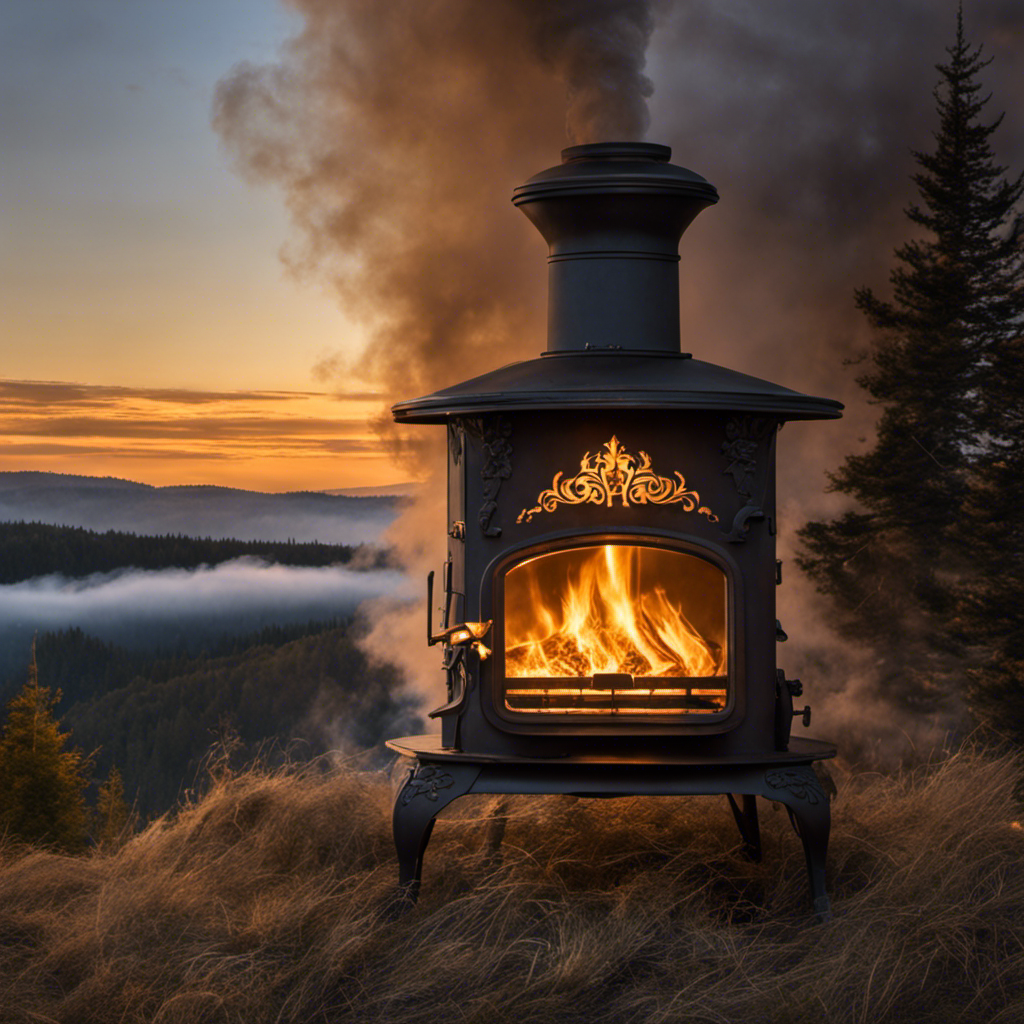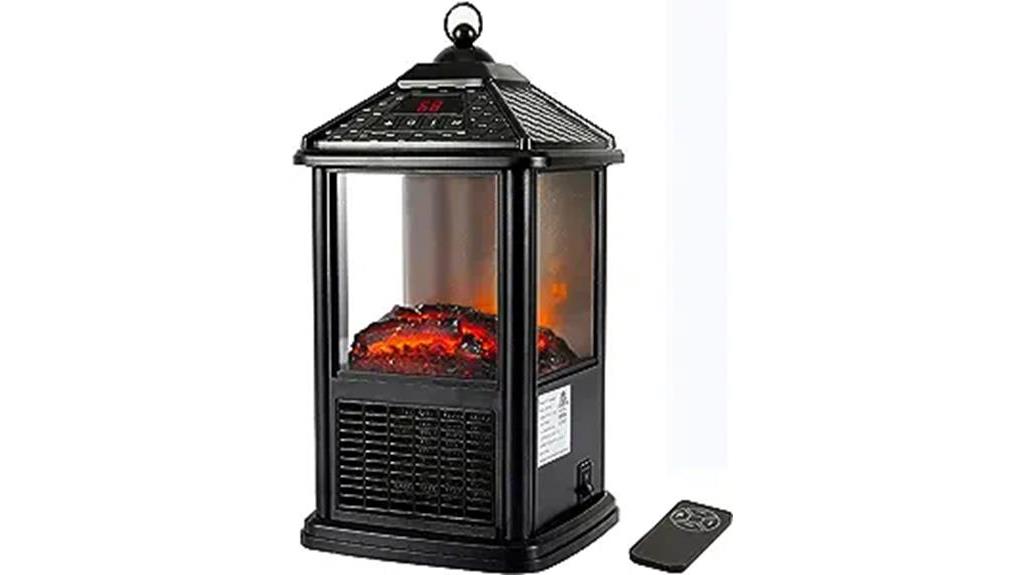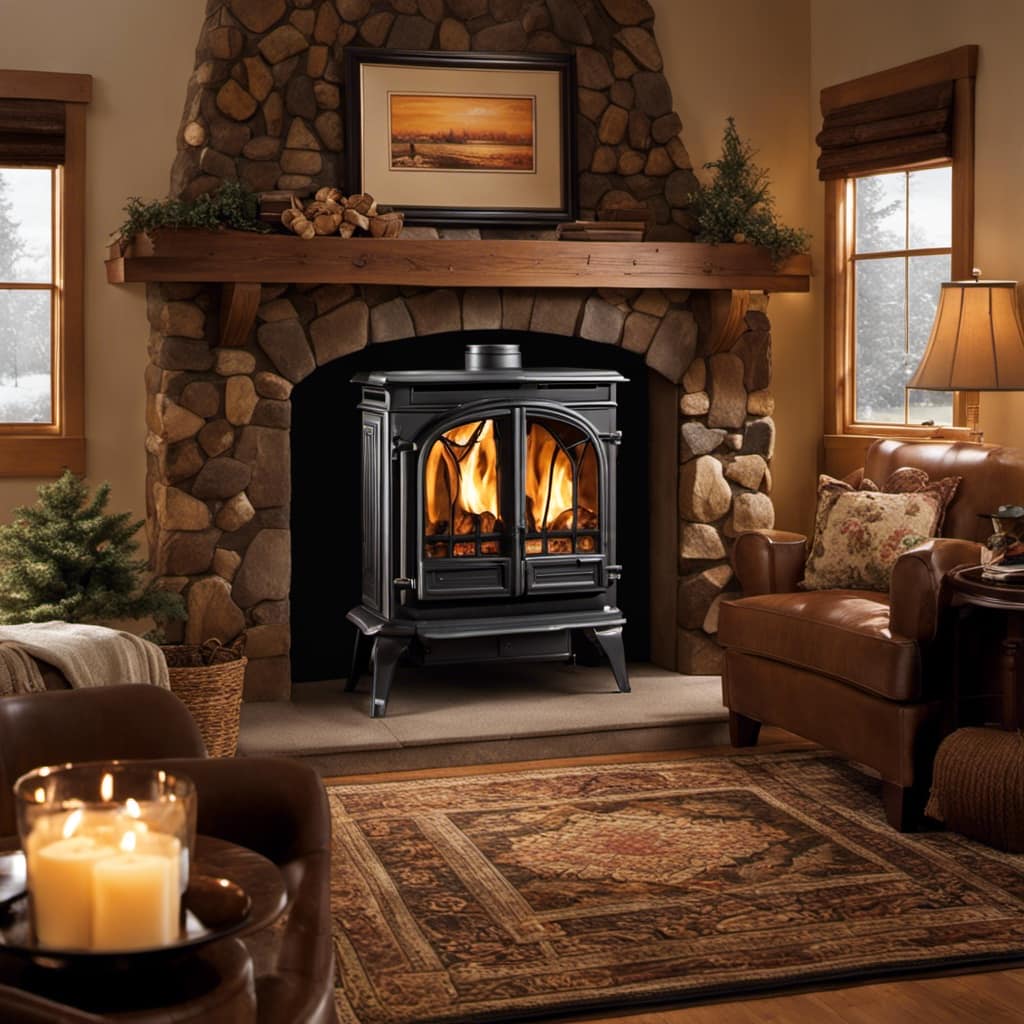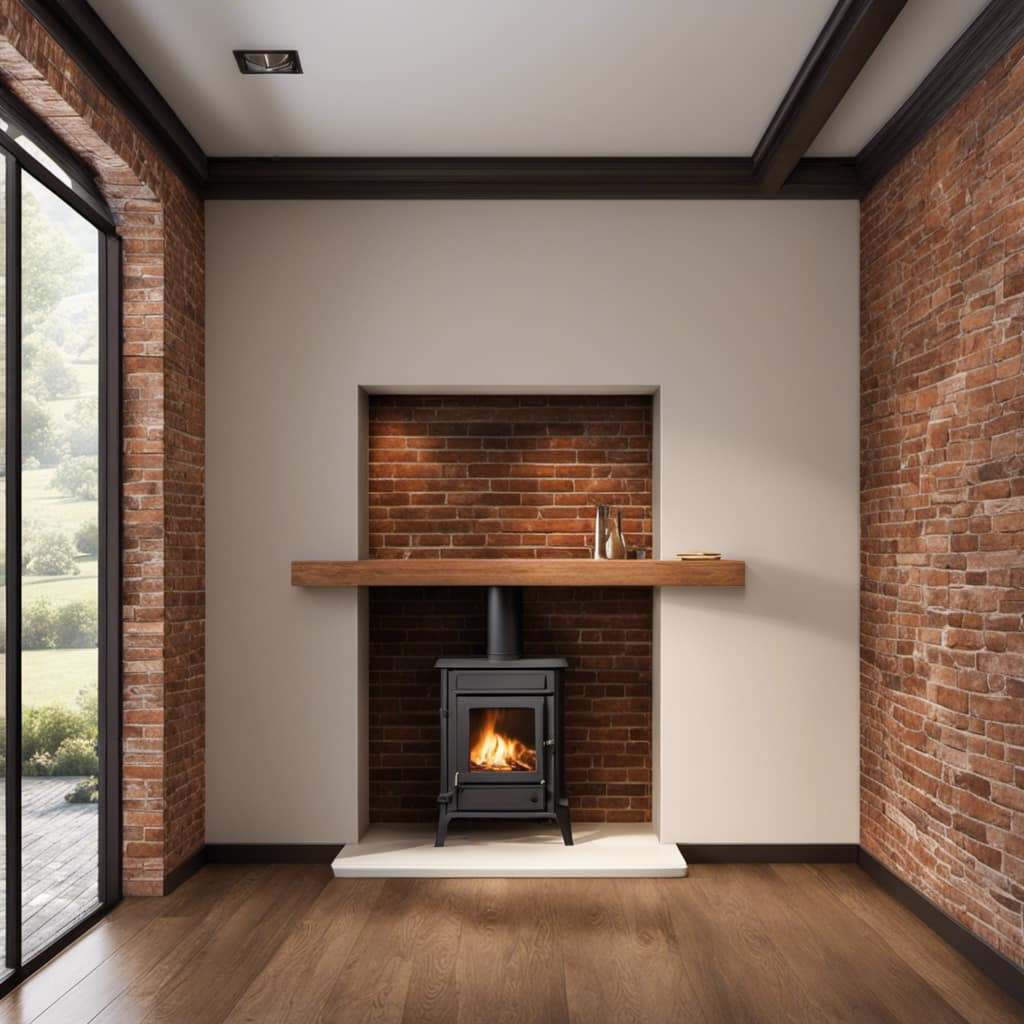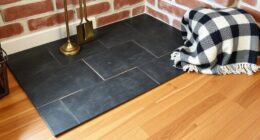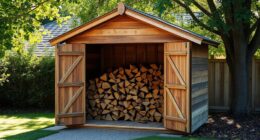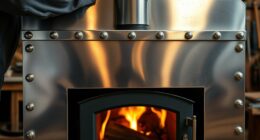Were you aware that the smoke emerging from the top of your wood stove could indicate potential problems?
In this article, I’ll explain the possible causes of this problem and provide some useful tips to prevent it.
From inadequate draft or airflow to improper wood burning techniques, there are several factors that can contribute to the issue.
By understanding the reasons behind the smoke, you’ll be able to troubleshoot and resolve the problem effectively.
Key Takeaways
- Smoke coming off the top of a wood stove can be caused by a blocked chimney or flue, improperly sealed stove door, use of unseasoned wood, and overloading the stove with fuel.
- Inadequate draft or airflow can also contribute to smoke coming off the top of a wood stove, which can be caused by insufficient ventilation, improper damper position, cold stove not preheated properly, and incorrect wood placement hindering airflow.
- Improper wood burning techniques, such as using damp or green wood, poor airflow leading to incomplete combustion, lack of regular maintenance and cleaning, and excessive smoke production, can also result in smoke coming off the top of a wood stove.
- Damaged or faulty stove components, including a cracked or deteriorating chimney, blocked flue, damaged stovepipe, and malfunctioning damper, can cause smoke to come off the top of a wood stove, resulting in decreased heating efficiency and potential release of harmful gases.
Possible Causes of Smoke Coming Off the Top of Your Wood Stove
I can’t figure out why there’s smoke coming off the top of my wood stove. This issue can be caused by several common mistakes or problems that can be easily addressed.
One possible reason for the smoke is a blocked chimney or flue. Over time, creosote and debris can accumulate and restrict the airflow, causing the smoke to escape through the top of the stove.
Another possibility is that the stove door isn’t properly sealed, allowing air to enter and disrupt the combustion process.
Additionally, if the wood isn’t properly seasoned or the stove is overloaded with fuel, it can create excessive smoke.
To troubleshoot these issues, clean the chimney regularly, ensure the stove door is tightly closed, and use dry, well-seasoned wood. These simple steps can help resolve the problem of smoke coming off the top of your wood stove.
Inadequate Draft or Airflow
Having a blocked chimney or flue can cause smoke to escape through the top of the stove, and therefore, it’s important to ensure adequate draft or airflow. Here are some common mistakes and troubleshooting techniques to consider:
-
Insufficient Ventilation: Check if there are any obstructions in the chimney or flue that may be restricting airflow. Clean or remove any debris or creosote buildup.
-
Damper Position: Make sure the damper is fully open to allow for proper ventilation. Sometimes, it may accidentally get partially closed, leading to poor draft.
-
Cold Stove: If the stove isn’t preheated properly, it can result in weak draft. Ensure the stove is adequately warmed up before adding wood.
-
Incorrect Wood Placement: Improperly stacking wood can hinder airflow. Arrange the logs in a way that promotes good combustion and airflow.
Improper Wood Burning Techniques
Why are some people using improper wood burning techniques and what can be done to address this issue? One of the most common mistakes I’ve noticed is the improper use of damp or green wood. Burning wood that hasn’t been properly seasoned can lead to poor combustion and excessive smoke production, which not only affects the efficiency of the wood stove but also poses health hazards. Another mistake is the lack of proper airflow, which can result in incomplete combustion and the release of harmful pollutants. To address these issues, it is important to educate people about the importance of using dry, seasoned wood and providing proper ventilation for their wood stoves. Additionally, regular maintenance and cleaning of the stove can help prevent the build-up of creosote, a highly flammable substance that can cause chimney fires.
| Common Mistakes | Health Hazards |
|---|---|
| Using damp wood | Excessive smoke production |
| Poor airflow | Release of harmful pollutants |
| Lack of maintenance | Creosote build-up and chimney fires |
Damaged or Faulty Stove Components
The damaged stove components were causing the excessive smoke and poor combustion. This issue can lead to a variety of problems, from decreased heating efficiency to potential health hazards due to the release of harmful gases. To address this issue, it’s crucial to identify and resolve the specific damaged components responsible for the smoke.
Here are some possible reasons for the smoke coming off the top of a wood stove:
-
Damaged chimney: A cracked or deteriorating chimney can allow smoke to escape, leading to poor draft and inefficient combustion.
-
Blocked flue: Obstructions like bird nests, creosote buildup, or debris can prevent proper airflow, resulting in smoke escaping through the top of the stove.
-
Damaged stovepipe: A damaged stovepipe can cause leaks, leading to smoke escaping into the room instead of being directed outside.
-
Malfunctioning damper: A faulty damper can disrupt the airflow and prevent smoke from being properly expelled through the chimney.
Tips to Prevent Smoke From Coming off the Top of Your Wood Stove
I’ve found some helpful tips to prevent smoke from coming off the top of your wood stove.
One of the main reasons for smoke escaping from the top of a wood stove is improper chimney maintenance. It’s important to regularly inspect and clean your chimney to remove any buildup of creosote or debris that can obstruct the airflow.
Another crucial aspect is proper wood storage. Make sure your firewood is stored in a dry and well-ventilated area. Wet or damp wood can produce more smoke and contribute to poor combustion.
Additionally, ensure that the wood is properly seasoned, as green or unseasoned wood tends to generate more smoke.
Conclusion
In conclusion, when smoke is coming off the top of your wood stove, it’s often due to inadequate draft or airflow, improper wood burning techniques, or damaged stove components. To prevent this issue, make sure there’s proper ventilation and airflow, follow correct wood burning practices, and regularly inspect and maintain your stove.
Remember, a well-functioning wood stove can provide warmth and comfort, so take the necessary steps to keep it running smoothly. As the saying goes, ‘A smokeless chimney brings warmth and peace.’

